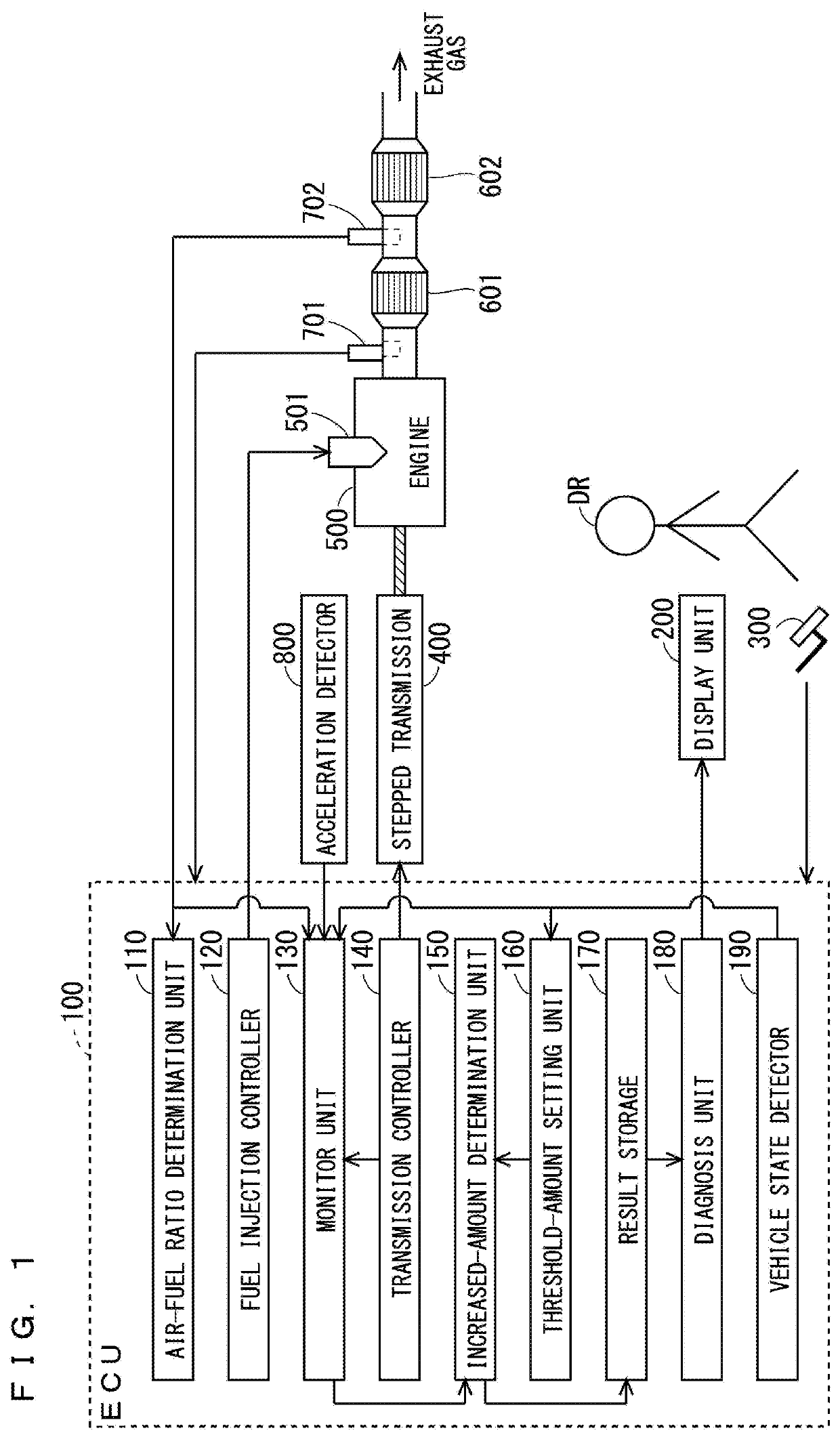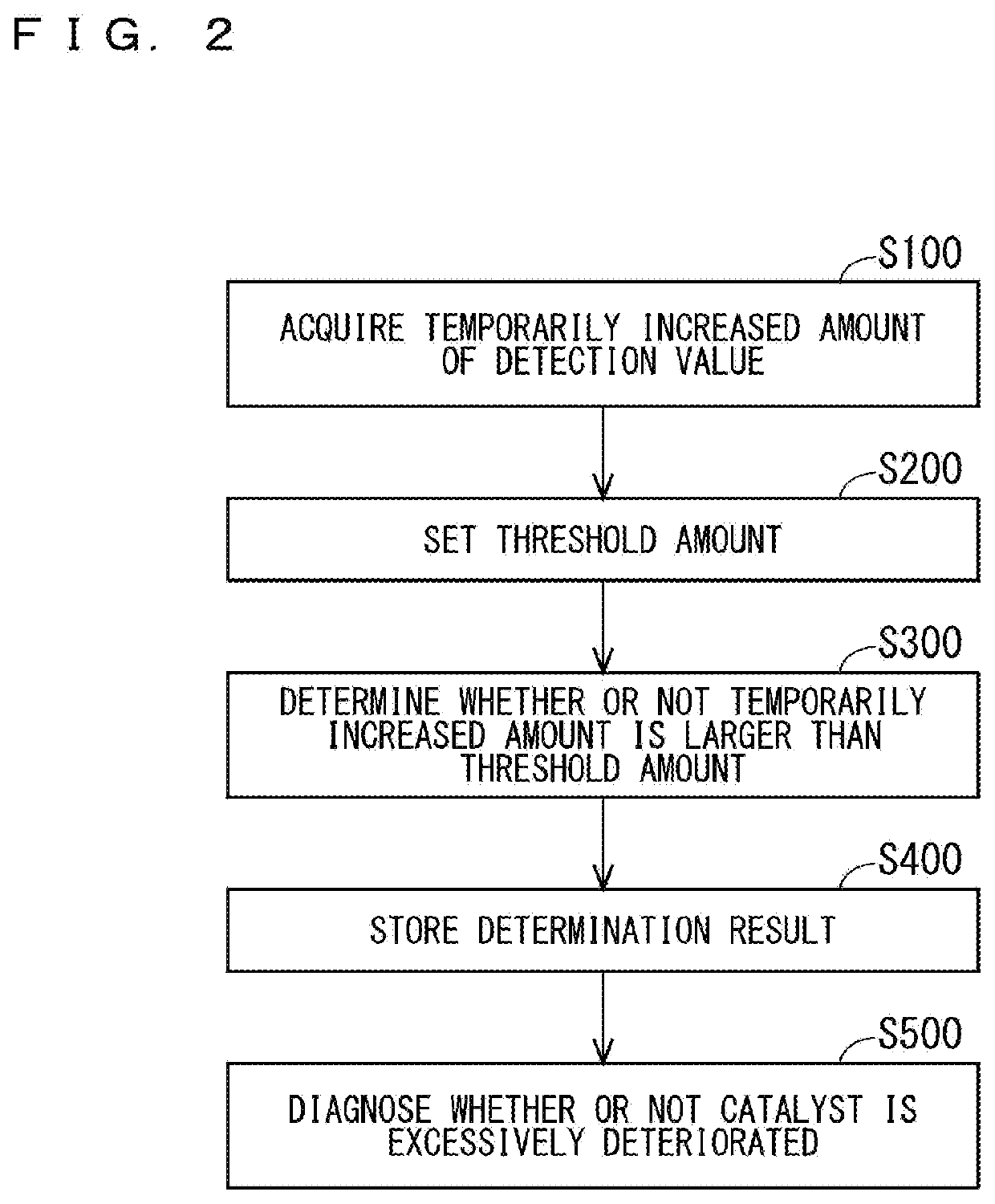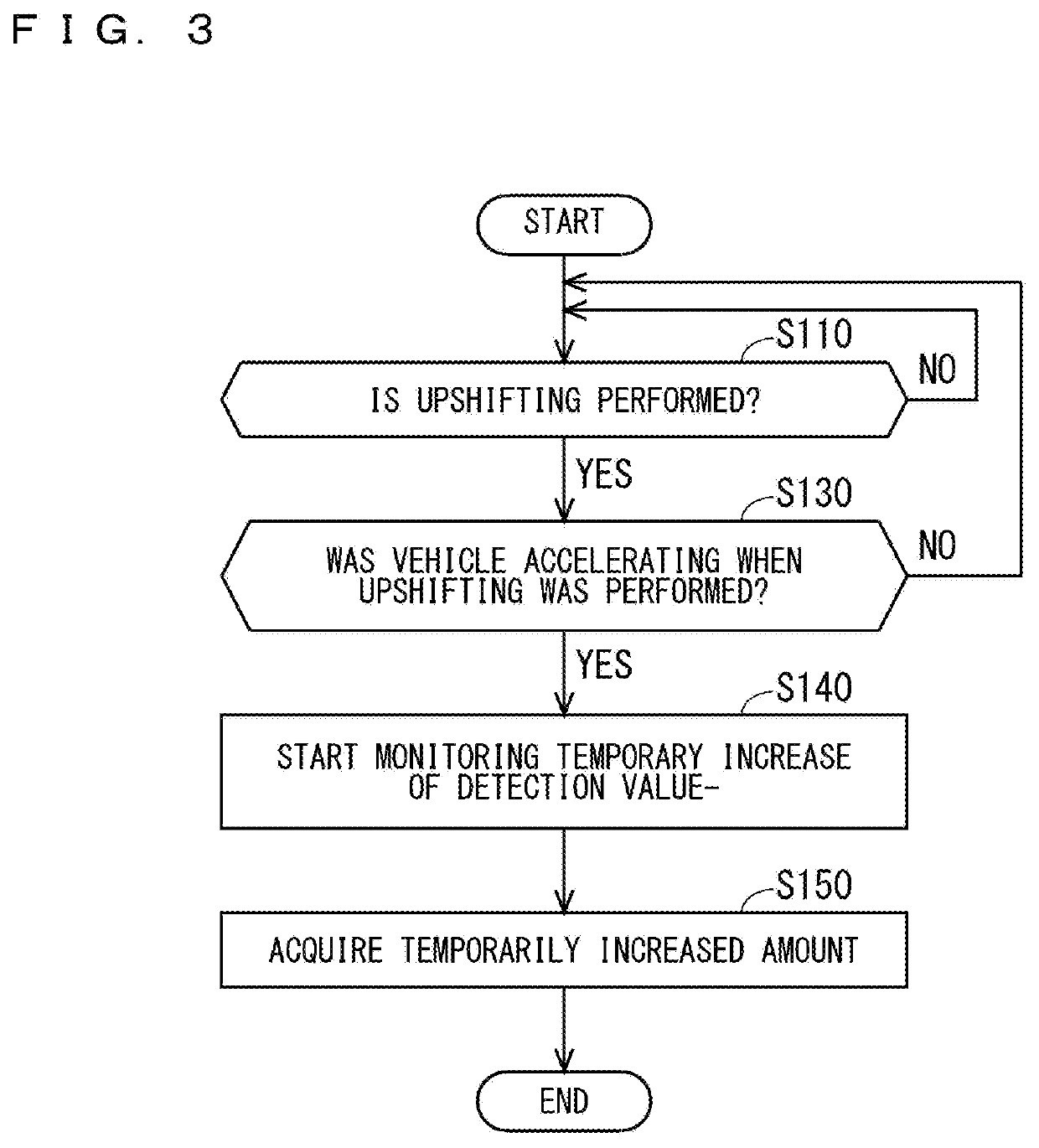Catalyst deterioration diagnosis method and catalyst deterioration diagnosis system
a technology of catalyst deterioration and diagnosis method, which is applied in the direction of electrical control, separation processes, instruments, etc., can solve the problems of measurement error, osc method is liable to be affected, and the error in estimating the performance of a twc is increased, so as to achieve high accuracy and high accuracy
- Summary
- Abstract
- Description
- Claims
- Application Information
AI Technical Summary
Benefits of technology
Problems solved by technology
Method used
Image
Examples
Embodiment Construction
[0029]An embodiment of the present invention will be described below with reference to the drawings.
[0030](Configuration)
[0031]FIG. 1 is a diagram schematically illustrating a configuration of a vehicle (system) according to this embodiment. In this embodiment, a vehicle is an automobile driven by a driver DR. The automobile includes a gasoline engine 500 (internal combustion engine) including a fuel injection device 501, a stepped transmission 400 connected to the gasoline engine 500, a TWC 601 (catalyst), and a catalyst degradation diagnosis system to be described later.
[0032]The vehicle may further include an accelerator pedal 300 (drive operation device) operated by the driver DR, an additional catalyst 602, an air-fuel ratio sensor 701, and an acceleration detector 800. The accelerator pedal 300 is a pedal operated by the driver DR to drive a vehicle. The additional catalyst 602 is disposed on a downstream side of the TWC 601. For example, the additional catalyst 602 is a TWC, ...
PUM
 Login to View More
Login to View More Abstract
Description
Claims
Application Information
 Login to View More
Login to View More - R&D
- Intellectual Property
- Life Sciences
- Materials
- Tech Scout
- Unparalleled Data Quality
- Higher Quality Content
- 60% Fewer Hallucinations
Browse by: Latest US Patents, China's latest patents, Technical Efficacy Thesaurus, Application Domain, Technology Topic, Popular Technical Reports.
© 2025 PatSnap. All rights reserved.Legal|Privacy policy|Modern Slavery Act Transparency Statement|Sitemap|About US| Contact US: help@patsnap.com



